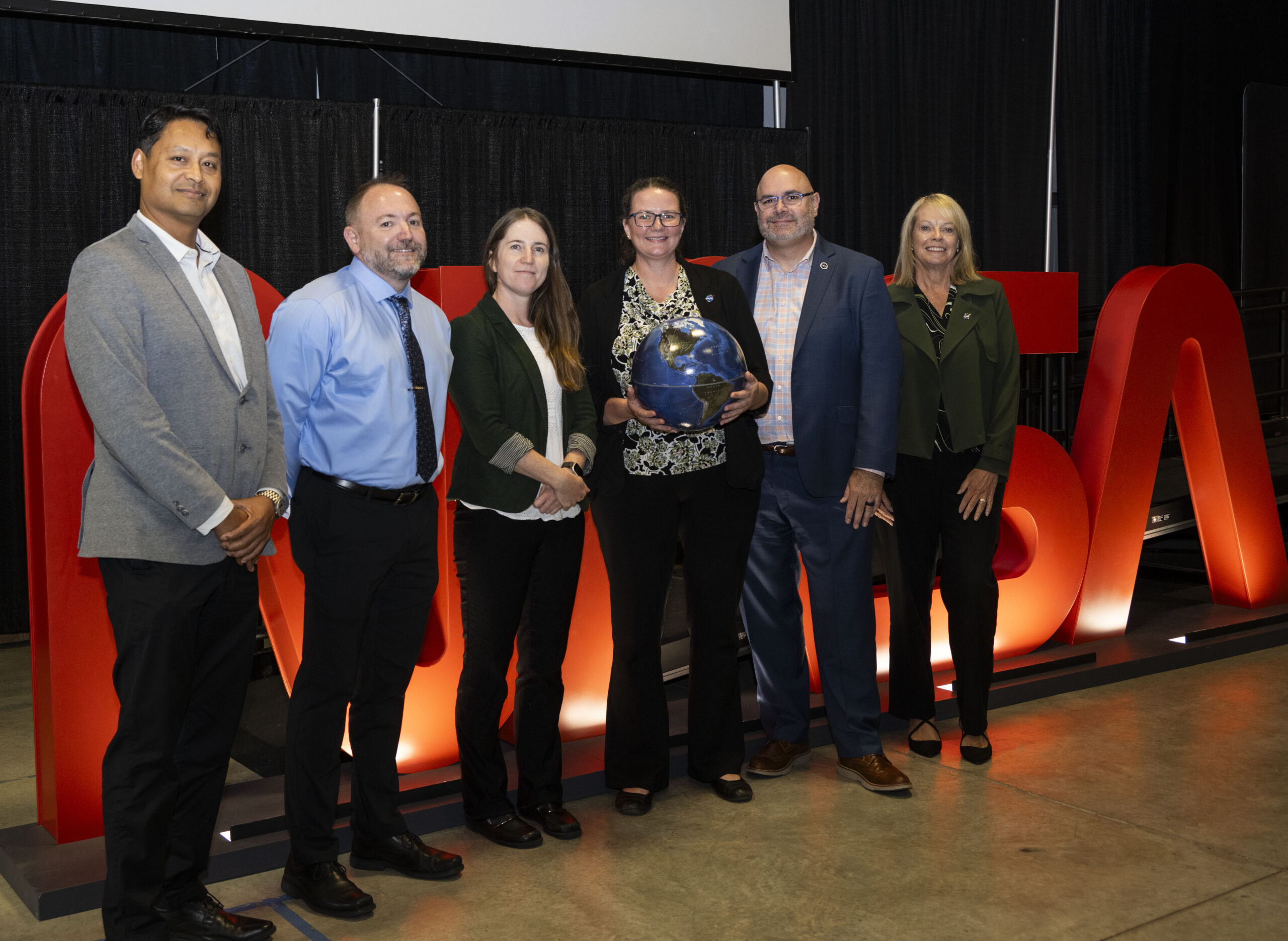18 Min Read The Marshall Star for September 18, 2024 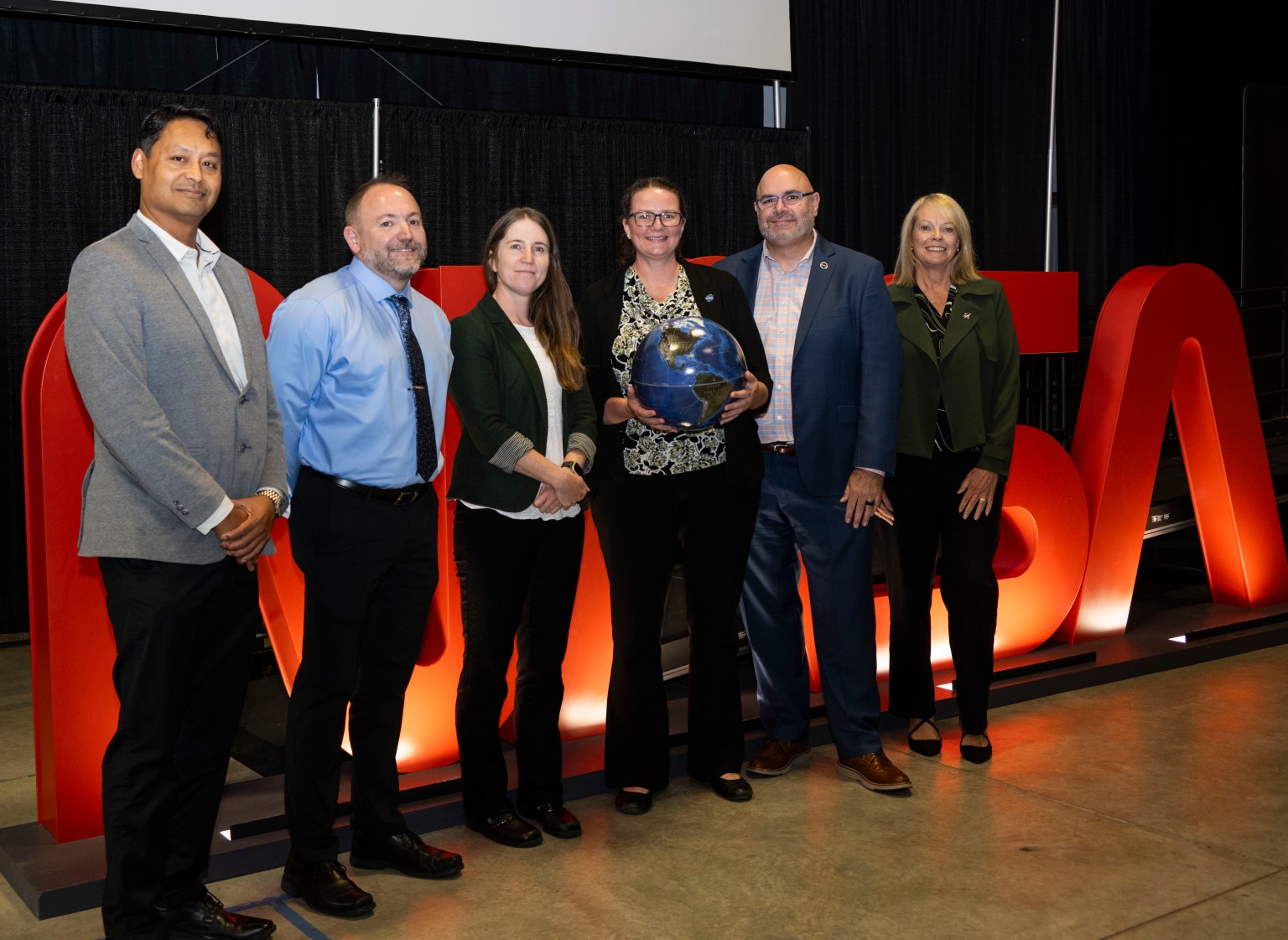 Marshall Welcomes NASA Chief Scientist for Climate, Science Town Hall
Marshall Welcomes NASA Chief Scientist for Climate, Science Town Hall 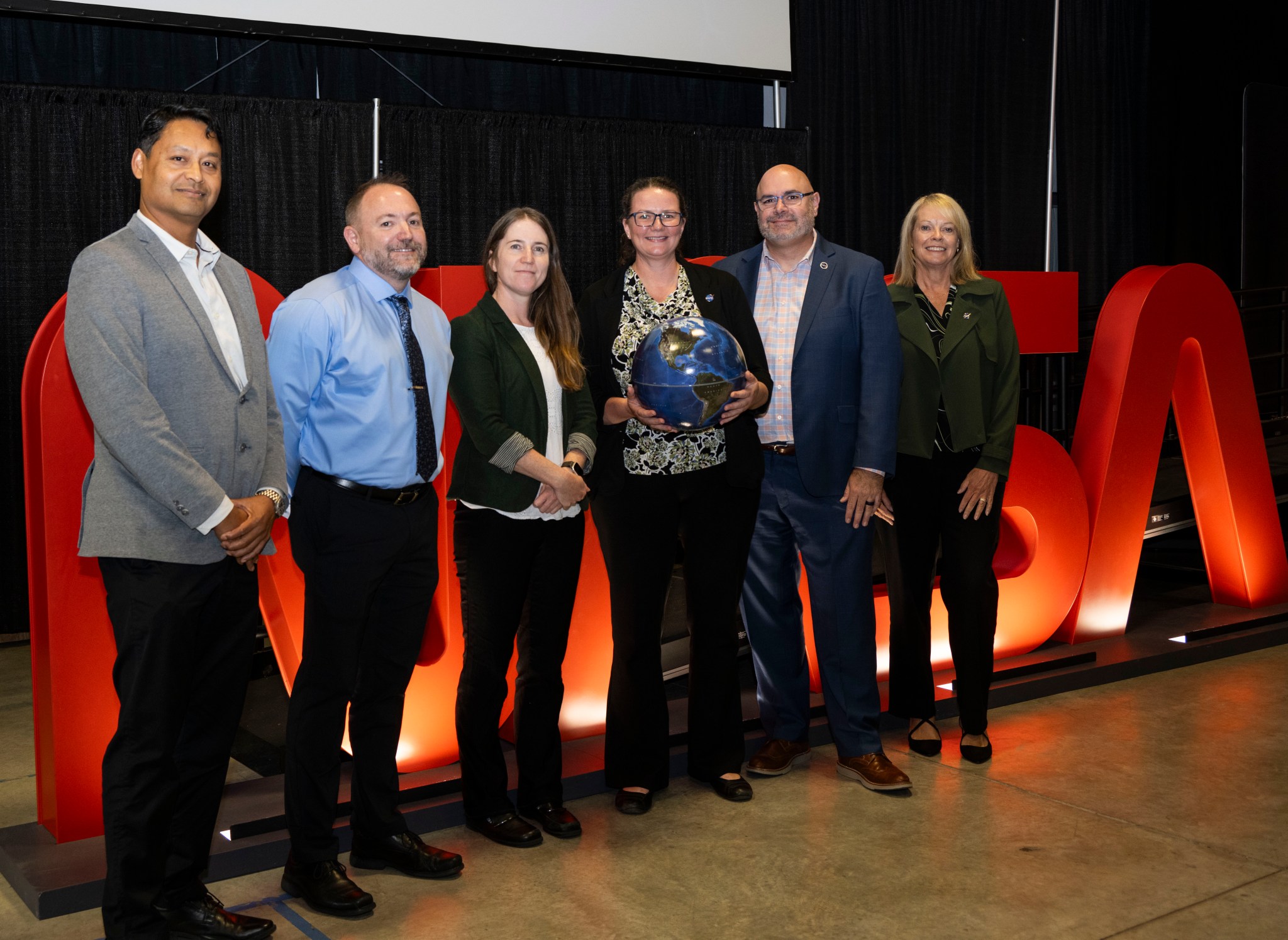 NASA Chief Scientist and Senior Climate Advisor Kate Calvin, center left, joins team members at the agency’s Marshall Space Flight Center for a Climate and Science Town Hall on Sept. 17 in Activities Building 4316. Calvin took part in a question-and-answer session during her visit that was live streamed agencywide. Joining her in the session were, from left, Rahul Ramachandran, research scientist and senior data science strategist for the Science Research and Project Division at Marshall; Marshall Earth Science Branch Chief Andrew Molthan; Marshall Chief Scientist Renee Weber; Marshall Center Director Joseph Pelfrey; and Marshall Science and Technology Office Manager Julie Bassler, who moderated the panel. (NASA/Krisdon Manecke)
NASA Chief Scientist and Senior Climate Advisor Kate Calvin, center left, joins team members at the agency’s Marshall Space Flight Center for a Climate and Science Town Hall on Sept. 17 in Activities Building 4316. Calvin took part in a question-and-answer session during her visit that was live streamed agencywide. Joining her in the session were, from left, Rahul Ramachandran, research scientist and senior data science strategist for the Science Research and Project Division at Marshall; Marshall Earth Science Branch Chief Andrew Molthan; Marshall Chief Scientist Renee Weber; Marshall Center Director Joseph Pelfrey; and Marshall Science and Technology Office Manager Julie Bassler, who moderated the panel. (NASA/Krisdon Manecke)
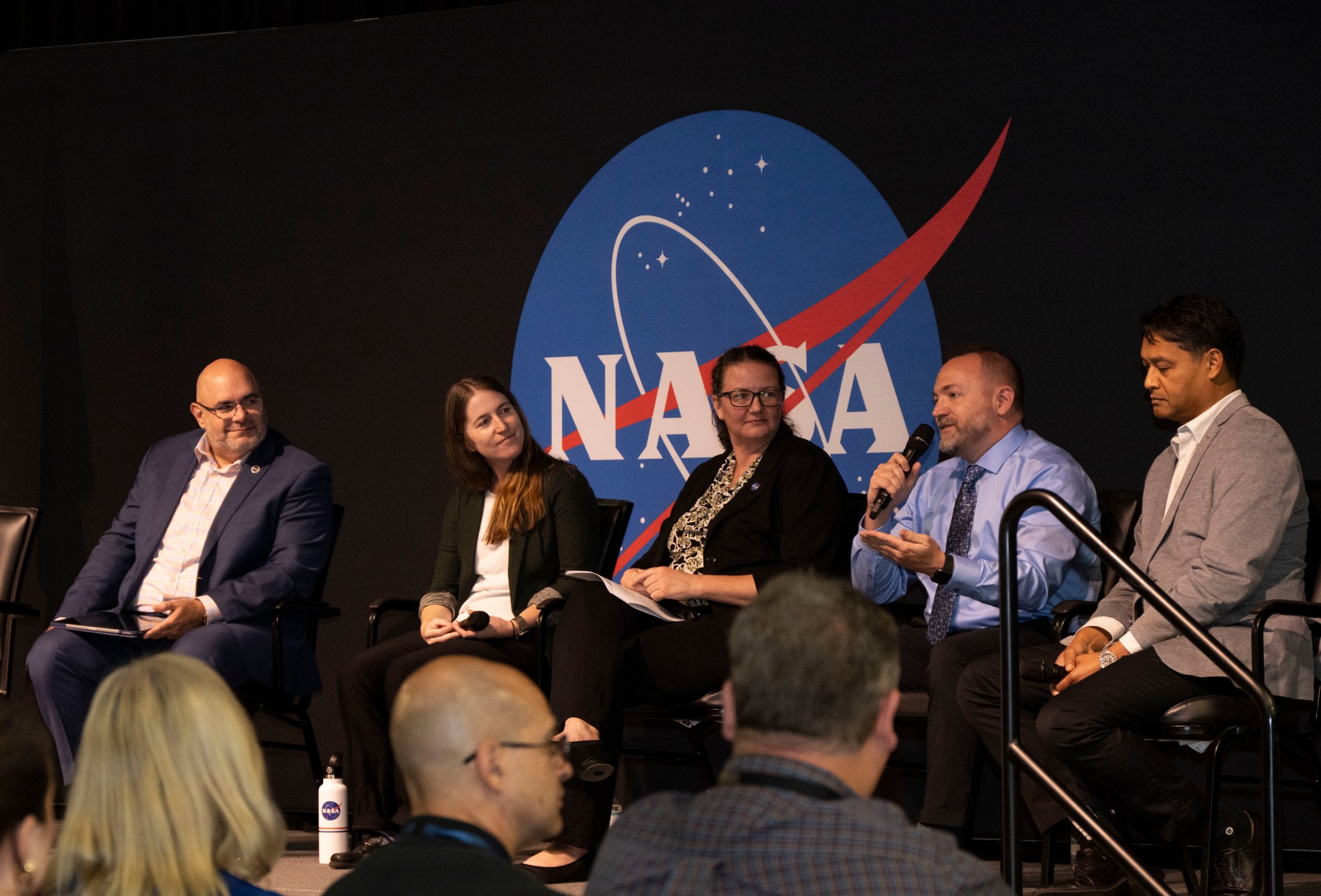 Molthan answers a question during the Climate Town Hall. Topics discussed during the town hall included the response by NASA and Marshall to climate change, the effects of climate change on NASA and Marshall objectives, and how NASA and Marshall are helping organizations around the world respond to climate change. (NASA/Krisdon Manecke)
Molthan answers a question during the Climate Town Hall. Topics discussed during the town hall included the response by NASA and Marshall to climate change, the effects of climate change on NASA and Marshall objectives, and how NASA and Marshall are helping organizations around the world respond to climate change. (NASA/Krisdon Manecke)
Space Station Payload Operations Director at Marshall Carries on Family Legacy By Celine Smith
Jacob Onken remembers his father, Jay Onken, waking him up one morning at 3 a.m. when he was 9 years old to watch the International Space Station fly overhead. At the time, his dad was a POD – a payload operations director – at NASA’s Marshall Space Flight Center leading flight controllers who support science experiments aboard the orbiting laboratory 24 hours a day, 365 days a year.
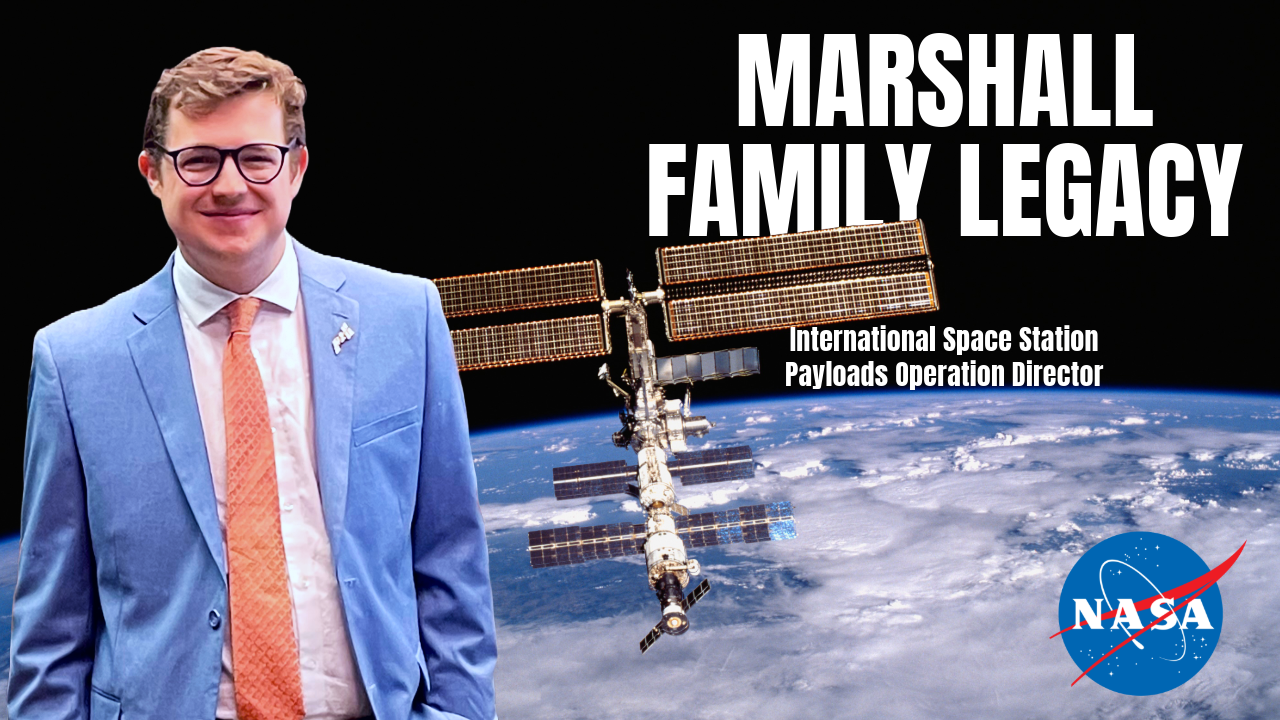 Jacob Onken is a second-generation payload operations director at NASA’s Marshall Space Flight Center. His father, Jay Onken, also served in the role in 1999. The father and son are the first family members at Marshall to both hold that position. NASA/Danielle Burleson Now, the younger Onken has started a new chapter in his career as a POD at Marshall, following in his father’s footsteps. The father and son are the first family members to serve in this role at Marshall. Onken said that happened by chance, despite growing up NASA-adjacent.
Jacob Onken is a second-generation payload operations director at NASA’s Marshall Space Flight Center. His father, Jay Onken, also served in the role in 1999. The father and son are the first family members at Marshall to both hold that position. NASA/Danielle Burleson Now, the younger Onken has started a new chapter in his career as a POD at Marshall, following in his father’s footsteps. The father and son are the first family members to serve in this role at Marshall. Onken said that happened by chance, despite growing up NASA-adjacent.
Jacob Onken began his aerospace career with an internship at Teledyne Brown Engineering while earning a bachelor’s degree in computer science at Auburn University in Alabama. The internship took him to Marshall’s Payload Operations Integration Center – a place his father had worked and often taken him when he was younger. Colleagues warmly remembered the veteran POD and welcomed to the role.
After graduating with a bachelor’s degree in computer science in 2018, Onken worked as a contractor with Teledyne for NASA. As a data management coordinator (DMC) he sat console and learned to operate data and video systems aboard the space station.
“I really found myself out here, and I loved it,” he said. “Working in space flight operations is insanely cool and beneficial to humanity.”
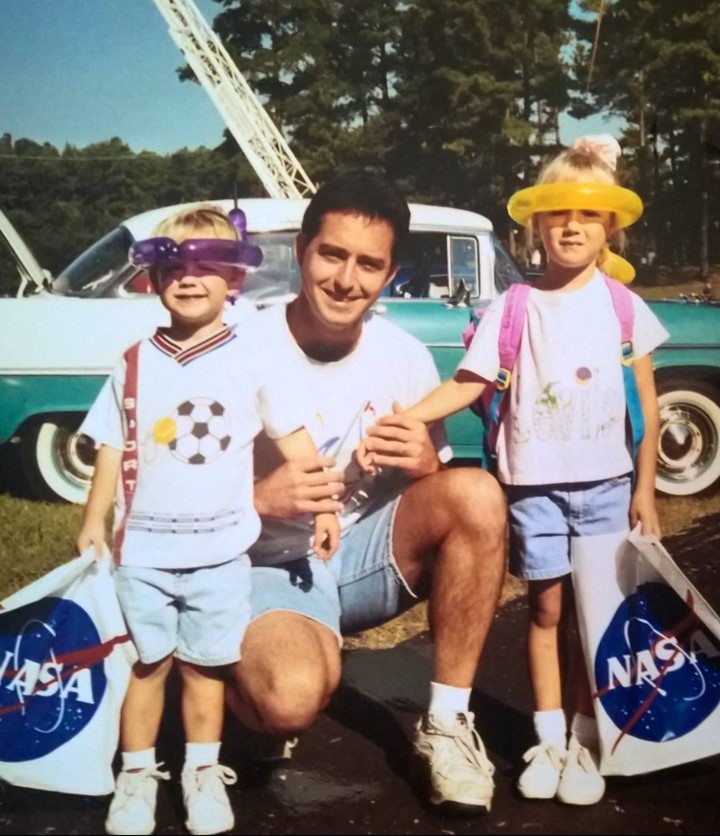 A young Jacob Onken smiles for a family photo while visiting Marshall with his father, Jay Onken, and sister, Elizabeth Onken, in 1998. Photo courtesy of Jacob Onken After training for over a year, he earned his DMC certification and later was assigned as the lead DMC for space station Expeditions 62 and 63. He later served as the DMC training lead, preparing new flight controllers for certification. In this role, he trained 13 DMCs for certification, using a people-based leadership approach he learned from his father.
A young Jacob Onken smiles for a family photo while visiting Marshall with his father, Jay Onken, and sister, Elizabeth Onken, in 1998. Photo courtesy of Jacob Onken After training for over a year, he earned his DMC certification and later was assigned as the lead DMC for space station Expeditions 62 and 63. He later served as the DMC training lead, preparing new flight controllers for certification. In this role, he trained 13 DMCs for certification, using a people-based leadership approach he learned from his father.
Well before the space station flew, Jay Onken was an aerospace engineer whose early career assignments included orbit analysis for the space shuttle and attitude selection for several Spacelab missions. He later was one of the first flight directors for NASA’s Chandra X-Ray Observatory, and following its launch, joined the first group of space station PODs.
He went on to become the director of Marshall’s Mission Operations Laboratory in 2005, deputy chief engineer for the Space Launch System in 2014, and director of Marshall’s Space Systems Department in 2016. He retired in 2018 and died in 2021 after battling cancer.
Jacob Onken continues Jay Onken’s legacy. Colleagues say he embodies similar traits. He often reflects on his father’s advice.
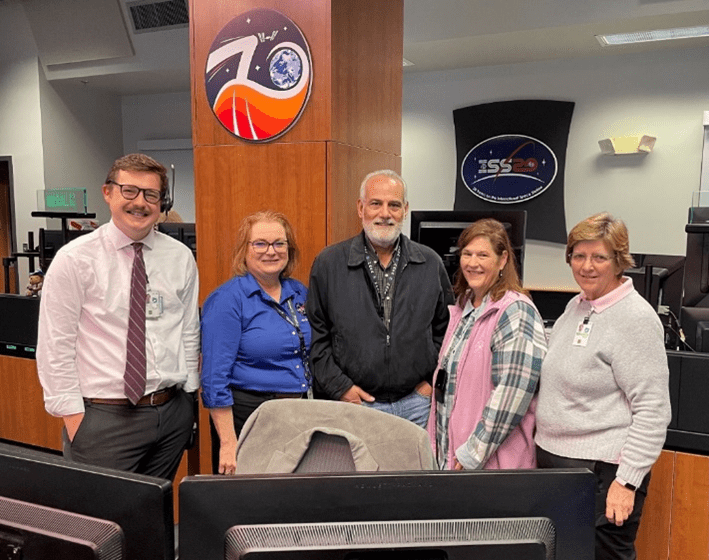 From left, Jacob Onken during his payload operations director (POD) certification ceremony with former PODs Carrie Olsen, Sam Digesu, Pat Patterson, and Tina Melton in the Payload Operations Center at Marshall. NASA/Craig Cruzen “I was lucky to have my dad, who understood the environment that I was working in,” he said. “I knew his work meant a lot to him. We were always close, but we got even closer. Bonding over the same things was special.”
From left, Jacob Onken during his payload operations director (POD) certification ceremony with former PODs Carrie Olsen, Sam Digesu, Pat Patterson, and Tina Melton in the Payload Operations Center at Marshall. NASA/Craig Cruzen “I was lucky to have my dad, who understood the environment that I was working in,” he said. “I knew his work meant a lot to him. We were always close, but we got even closer. Bonding over the same things was special.”
In 2022, Onken became the DMC flight operations lead, supporting real-time console and planning operations for that team. In 2023, he joined the Operations Directors Office. After another rigorous training curriculum, he completed his POD certification in January 2024.
“It’s rewarding and heartwarming to know that the future of space flight operations is in good hands with the new generation,” said Craig Cruzen, the POD training lead who oversaw Onken’s instruction and certification.
Onken leads a team that communicates with astronauts about the scientific experiments they’re performing on the space station and ensures their safety from the ground.
As a payload operations director at NASA’s Marshall Space Flight Center, Jacob Onken leads flight controllers in the International Space Station Payload Operations and Integration Team, following in his father’s footsteps. Onken and his father, Jay Onken, are the first family members to both serve in the role at Marshall. (NASA) “My role requires teamwork, trust, and communication,” he said. “I ask myself, ‘How can we work together effectively to get the job done?’”
While he holds the same position his father held, the space station has evolved, becoming a convergence of science, technology, and innovation. “Jay Onken was a POD when the International Space Station was just beginning,” said former POD Carrie Olsen, now manager of NASA’s Next Gen STEM K-12 education project and a family friend to the Onkens. “The challenge the space station faced back then was its newness,” Olsen explained. “We were still figuring out how to best work with Johnson Space Center, scientists around the world, international partners, and the space station program.”
Though Marshall had a rich operations history working programs like Apollo, Space Shuttle, Skylab, and Chandra, the space station was truly unlike anything that had come before.
“Jay’s leadership qualities and integrity helped to build trust across the organization and the agency. This allowed Marshall’s operations team to excel and be recognized as the premier space station science operations center across the globe,” said his former colleague Sam Digesu, currently technical manager of the Payload and Mission Operations Division. “Jacob is on the that same path.”
Jacob Onken says one of his career goals is to support payload operations on the lunar surface for the Artemis missions. “My dad was around when it started, and hopefully, I’m around to see it through.”
NASA Hosts Observe the Moon Night at U.S. Space & Rocket Center 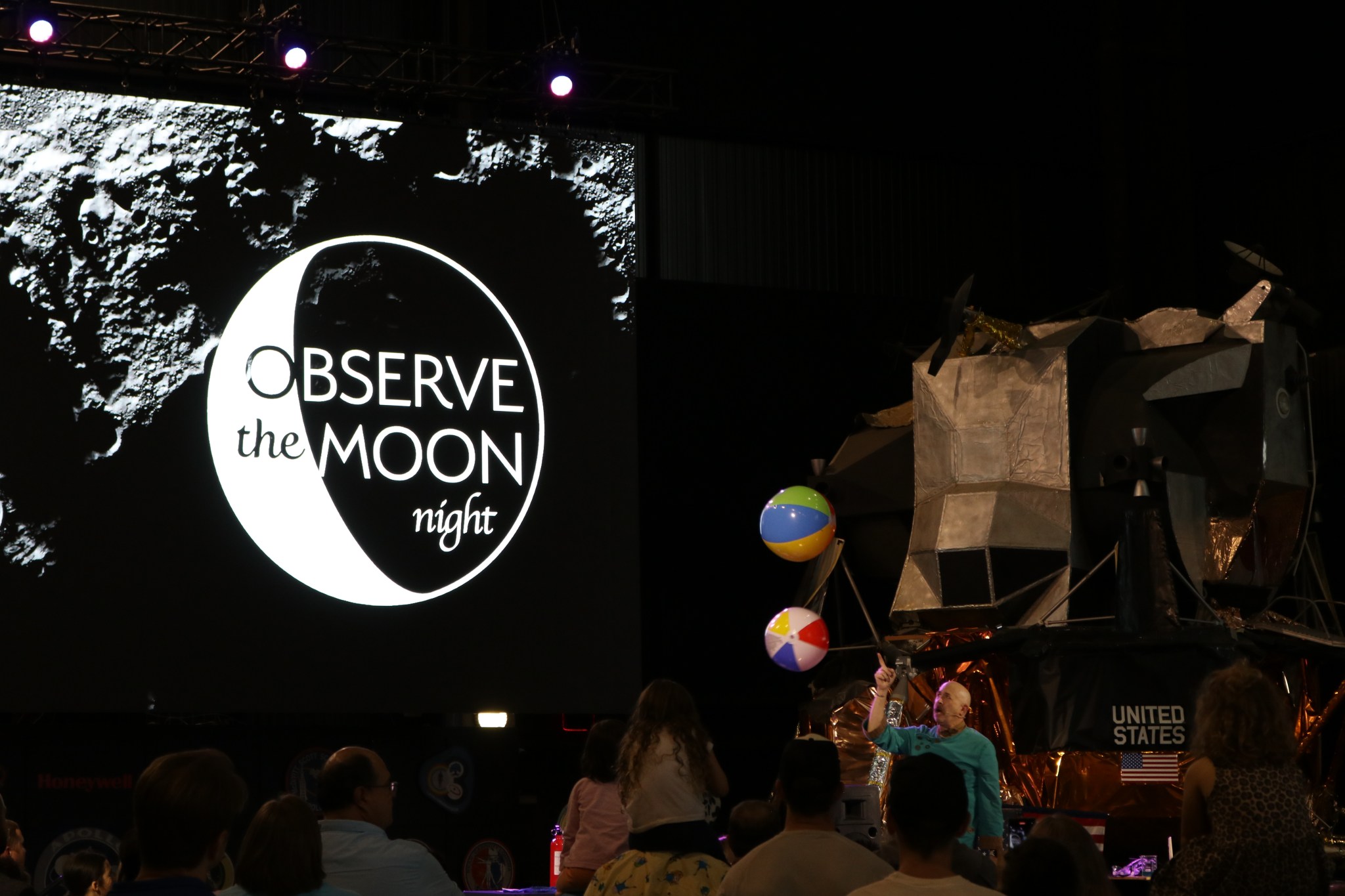 The Science Wizard, David Hagerman, right center, entertains the crowd with one of his shows Sept. 14 during Observe the Moon Night at the U.S. Space & Rocket Center in Huntsville. The free public event was part of International Observe the Moon Night, a worldwide celebration encouraging observation, appreciation, and understanding of the Moon and its connection to NASA exploration and discovery. NASA’s Planetary Missions Program Office hosted the event at the rocket center. The Planetary Missions Program Office is located at NASA’s Marshall Space Flight Center. (NASA/Lane Figueroa)
The Science Wizard, David Hagerman, right center, entertains the crowd with one of his shows Sept. 14 during Observe the Moon Night at the U.S. Space & Rocket Center in Huntsville. The free public event was part of International Observe the Moon Night, a worldwide celebration encouraging observation, appreciation, and understanding of the Moon and its connection to NASA exploration and discovery. NASA’s Planetary Missions Program Office hosted the event at the rocket center. The Planetary Missions Program Office is located at NASA’s Marshall Space Flight Center. (NASA/Lane Figueroa)
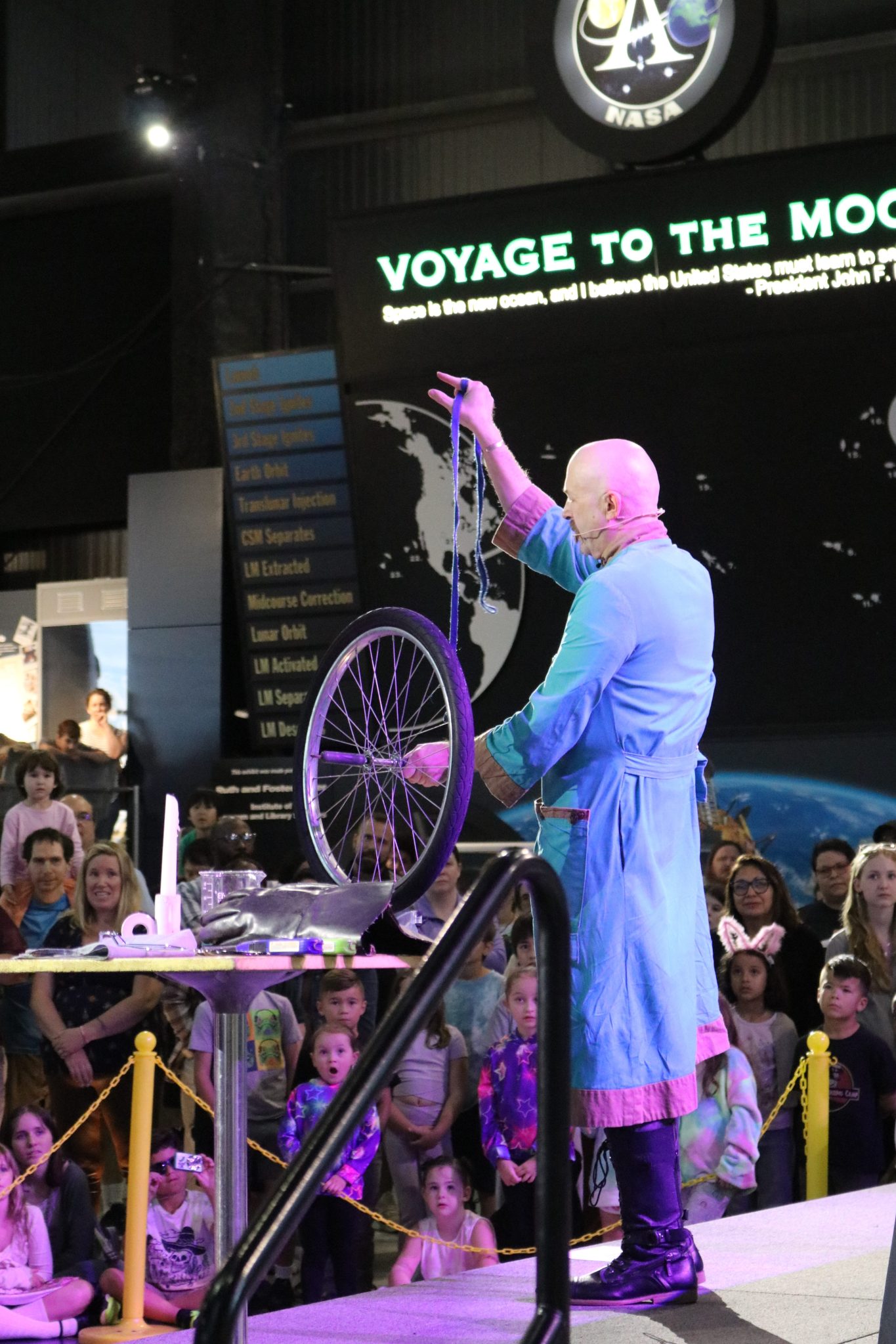 Audience members react during one of Hagerman’s demonstrations at Observe the Moon Night. (NASA/Lane Figueroa)
Audience members react during one of Hagerman’s demonstrations at Observe the Moon Night. (NASA/Lane Figueroa)
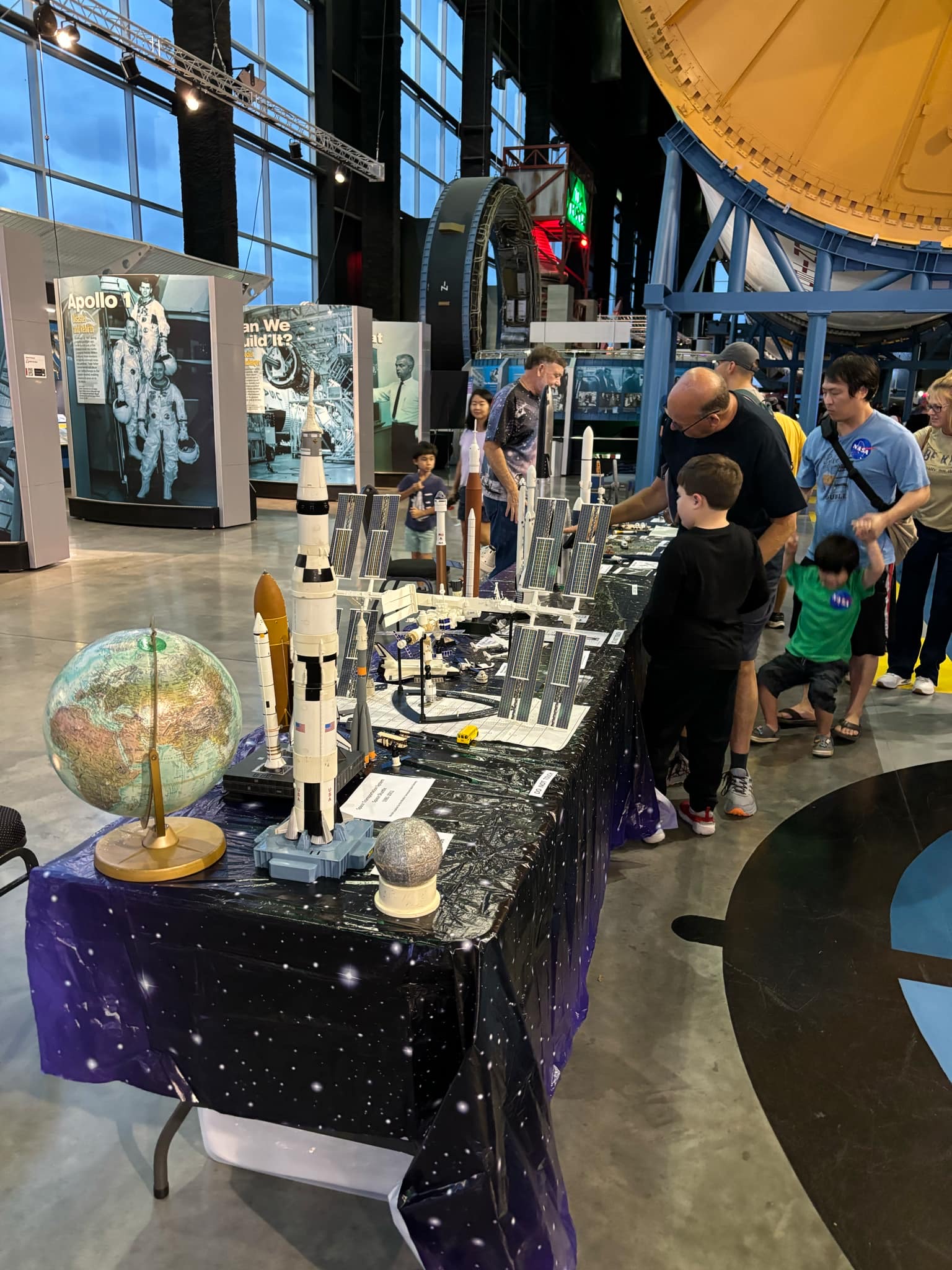 Attendees visit a NASA display during the Observe the Moon Night event. (NASA/Daniel Horton)
Attendees visit a NASA display during the Observe the Moon Night event. (NASA/Daniel Horton)
‘Legacy of the Invisible’ Event to Celebrate Marshall’s Contributions to Astrophysics The public is invited to join NASA’s Marshall Space Flight Center for a special celebration of art and astronomy in downtown Huntsville on Sept. 20 from 6 to 8 p.m. The event will include a dedication of Huntsville’s newest art installation, “No Straight Lines,” by local artist Float.
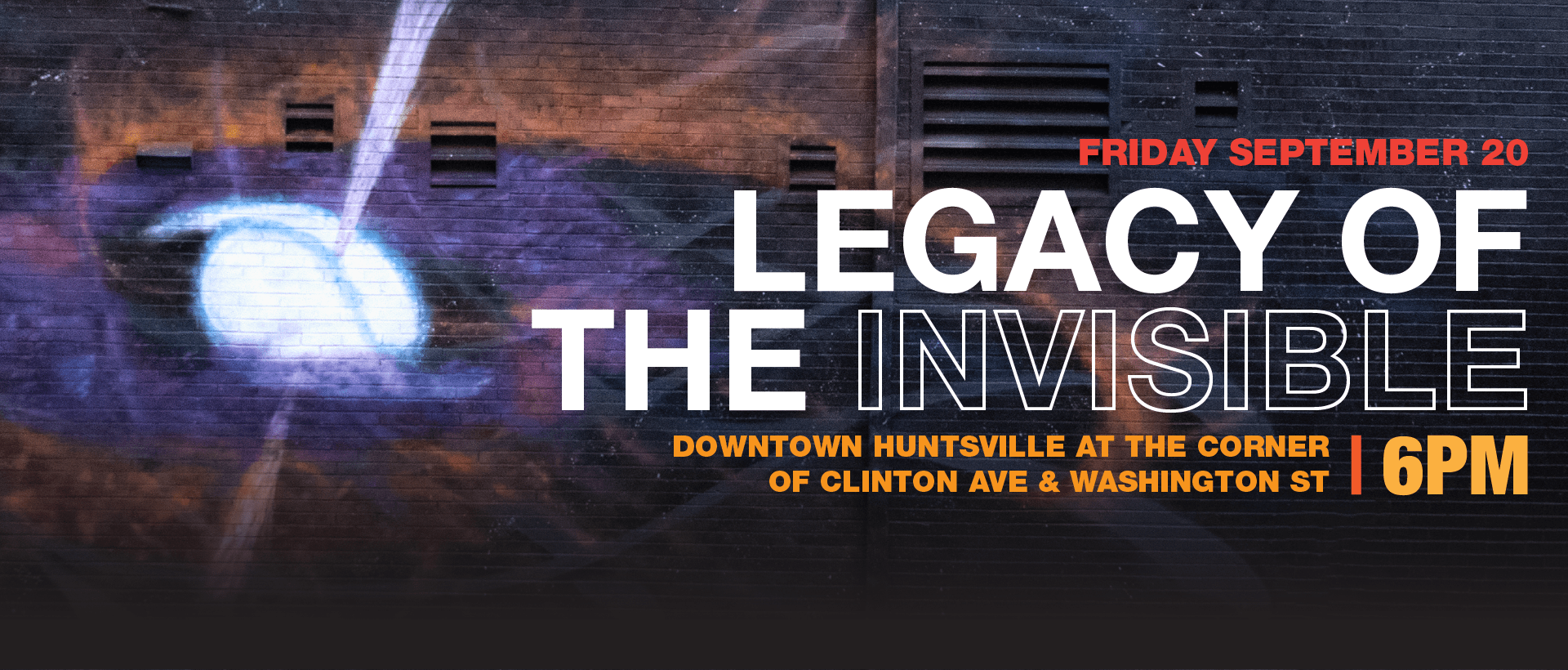 The celebratory event, “Legacy of the Invisible,” will take place at the corner of Clinton Avenue and Washington Street, coinciding with the 25th anniversary of NASA’s Chandra X-ray Observatory. Attendees will have a chance to meet and hear from NASA experts, as well as meet Float, the artist behind “No Straight Lines,” which aims to honor Huntsville’s rich scientific legacy in astrophysics and highlight the groundbreaking discoveries made possible by Huntsville scientists and engineers.
The celebratory event, “Legacy of the Invisible,” will take place at the corner of Clinton Avenue and Washington Street, coinciding with the 25th anniversary of NASA’s Chandra X-ray Observatory. Attendees will have a chance to meet and hear from NASA experts, as well as meet Float, the artist behind “No Straight Lines,” which aims to honor Huntsville’s rich scientific legacy in astrophysics and highlight the groundbreaking discoveries made possible by Huntsville scientists and engineers.
Enjoy live music, art vendors, food, and more.
Learn more about Chandra’s 25th Anniversary.
SLS Program Manager John Honeycutt Delivers Keynote at National Space Club Breakfast  John Honeycutt, front center, manager of NASA’s SLS (Space Launch System) Program at the agency’s Marshall Space Flight Center, delivers the keynote address at the National Space Club Breakfast on Sept. 17 in Huntsville. Honeycutt provided a detailed presentation to the audience with insight into the operations, accomplishments, and future goals for the SLS Program. The SLS rocket is a powerful, advanced launch vehicle for a new era of human exploration beyond Earth’s orbit. “All elements of the SLS Block I for the first crewed lunar mission of the 21st century are either complete and ready for stacking or are nearing completion,” Honeycutt said. “For more than 60 years, this town – this community – has led the effort to explore space. We aren’t done. SLS and Artemis are the next chapter in that legacy. Led and enabled by folks in this room, at Marshall, and here in North Alabama, we will launch missions to the Moon that will re-write history books, lead to scientific discoveries, and pave the way to Mars.” (NASA/Serena Whitfield)
John Honeycutt, front center, manager of NASA’s SLS (Space Launch System) Program at the agency’s Marshall Space Flight Center, delivers the keynote address at the National Space Club Breakfast on Sept. 17 in Huntsville. Honeycutt provided a detailed presentation to the audience with insight into the operations, accomplishments, and future goals for the SLS Program. The SLS rocket is a powerful, advanced launch vehicle for a new era of human exploration beyond Earth’s orbit. “All elements of the SLS Block I for the first crewed lunar mission of the 21st century are either complete and ready for stacking or are nearing completion,” Honeycutt said. “For more than 60 years, this town – this community – has led the effort to explore space. We aren’t done. SLS and Artemis are the next chapter in that legacy. Led and enabled by folks in this room, at Marshall, and here in North Alabama, we will launch missions to the Moon that will re-write history books, lead to scientific discoveries, and pave the way to Mars.” (NASA/Serena Whitfield)
NASA’s Lunar Challenge Participants to Showcase Innovations During Awards NASA‘s Watts on the Moon Challenge, designed to advance the nation’s lunar exploration goals under the Artemis campaign by challenging United States innovators to develop breakthrough power transmission and energy storage technologies that could enable long-duration Moon missions, concludes Sept. 20 at the Great Lakes Science Center in Cleveland, Ohio.
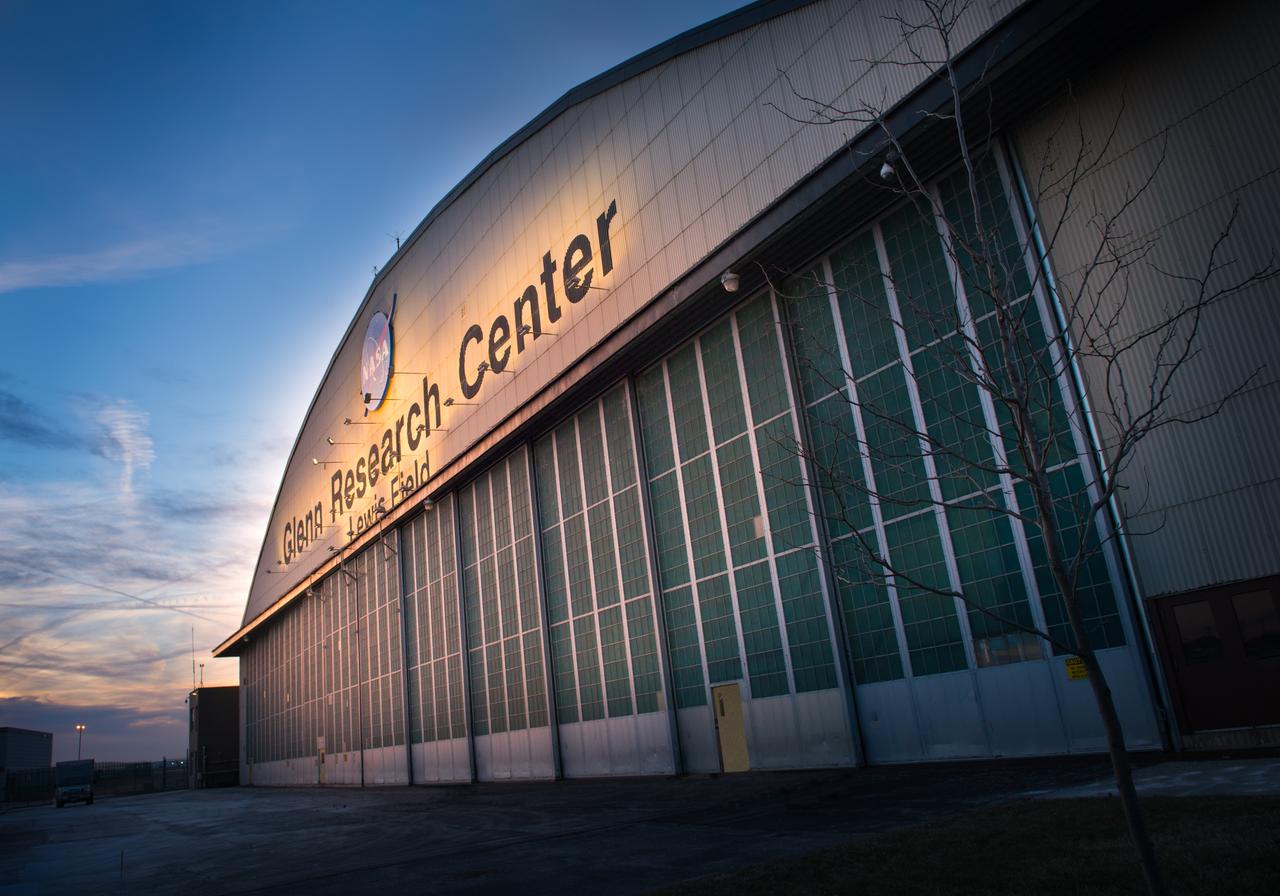 The Sun rises above the Flight Research Building at NASA’s Glenn Research Center in Cleveland.Credit: NASA “For astronauts to maintain a sustained presence on the Moon during Artemis missions, they will need continuous, reliable power,” said Kim Krome-Sieja, acting program manager, Centennial Challenges at NASA’s Marshall Space Flight Center. “NASA has done extensive work on power generation technologies. Now, we’re looking to advance these technologies for long-distance power transmission and energy storage solutions that can withstand the extreme cold of the lunar environment.”
The Sun rises above the Flight Research Building at NASA’s Glenn Research Center in Cleveland.Credit: NASA “For astronauts to maintain a sustained presence on the Moon during Artemis missions, they will need continuous, reliable power,” said Kim Krome-Sieja, acting program manager, Centennial Challenges at NASA’s Marshall Space Flight Center. “NASA has done extensive work on power generation technologies. Now, we’re looking to advance these technologies for long-distance power transmission and energy storage solutions that can withstand the extreme cold of the lunar environment.”
The technologies developed through the Watts on the Moon Challenge were the first power transmission and energy storage prototypes to be tested by NASA in an environment that simulates the extreme cold and weak atmospheric pressure of the lunar surface, representing a first step to readying the technologies for future deployment on the Moon. Successful technologies from this challenge aim to inspire, for example, new approaches for helping batteries withstand cold temperatures and improving grid resiliency in remote locations on Earth that face harsh weather conditions.
During the final round of competition, finalist teams refined their hardware and delivered a full system prototype for testing in simulated lunar conditions at NASA’s Glenn Research Center. The test simulated a challenging power system scenario where there are six hours of solar daylight, 18 hours of darkness, and the user is three kilometers from the power source.
“Watts on the Moon was a fantastic competition to judge because of its unique mission scenario,” said Amy Kaminski, program executive, Prizes, Challenges, and Crowdsourcing, Space Technology Mission Directorate at NASA Headquarters. “Each team’s hardware was put to the test against difficult criteria and had to perform well within a lunar environment in our state-of-the-art thermal vacuum chambers at NASA Glenn.”
Each finalist team was scored based on Total Effective System Mass (TESM), which determines how the system works in relation to its mass. At the awards ceremony, NASA will award $1 million to the top team who achieves the lowest TESM score, meaning that during testing, that team’s system produced the most efficient output-to-mass ratio. The team with the second lowest mass will receive $500,000. The awards ceremony stream live on NASA Glenn’s YouTube channel and NASA Prize’s Facebook page.
The Watts on the Moon Challenge is a NASA Centennial Challenge led by NASA Glenn. NASA Marshall manages Centennial Challenges, which are part of the agency’s Prizes, Challenges, and Crowdsourcing program in the Space Technology Mission Directorate. NASA has contracted HeroX to support the administration of this challenge.
Technicians Work to Prepare Europa Clipper for Propellant Loading NASA’s Europa Clipper mission moves closer to launch as technicians worked Sept. 11 inside the Payload Hazardous Servicing Facility to prepare the spacecraft for upcoming propellant loading at the agency’s Kennedy Space Center.
 Technicians work to complete operations before propellant load occurs ahead of launch for NASA’s Europa Clipper spacecraft inside the Payload Hazardous Servicing Facility at the agency’s Kennedy Space Center on Sept. 11.NASA/Kim Shiflett The spacecraft will explore Jupiter’s icy moon Europa, which is considered one of the most promising habitable environments in the solar system. The mission will research whether Europa’s subsurface ocean could hold the conditions necessary for life. Europa could have all the “ingredients” for life as we know it: water, organics, and chemical energy.
Technicians work to complete operations before propellant load occurs ahead of launch for NASA’s Europa Clipper spacecraft inside the Payload Hazardous Servicing Facility at the agency’s Kennedy Space Center on Sept. 11.NASA/Kim Shiflett The spacecraft will explore Jupiter’s icy moon Europa, which is considered one of the most promising habitable environments in the solar system. The mission will research whether Europa’s subsurface ocean could hold the conditions necessary for life. Europa could have all the “ingredients” for life as we know it: water, organics, and chemical energy.
Europa Clipper’s launch period opens Oct. 10. It will lift off on a SpaceX Falcon Heavy rocket from Kennedy’s Launch Complex 39A. The spacecraft then will embark on a journey of nearly six years and 1.8 billion miles before reaching Jupiter’s orbit in 2030.
The spacecraft is designed to study Europa’s icy shell, underlying ocean, and potential plumes of water vapor using a gravity science experiment alongside a suite of nine instruments including cameras, spectrometers, a magnetometer, and ice-penetrating radar. The data Europa Clipper collects could improve our understanding of the potential for life elsewhere in the solar system.
Managed by Caltech in Pasadena, California, NASA’s Jet Propulsion Laboratory leads the development of the Europa Clipper mission in partnership with APL for NASA’s Science Mission Directorate. APL designed the main spacecraft body in collaboration with JPL and NASA’s Goddard Space Flight Center. The Planetary Missions Program Office at NASA’s Marshall Space Flight Center executes program management of the Europa Clipper mission.
Learn more about the mission here.
Marshall to Present 2024 Small Business Awards Sept. 19 NASA’s Marshall Space Flight Center will host its annual Small Business Industry and Advocate Awards ceremony Sept. 19. The awards recognize small businesses and small business champions from government and industry for their outstanding achievements in fiscal year 2024.
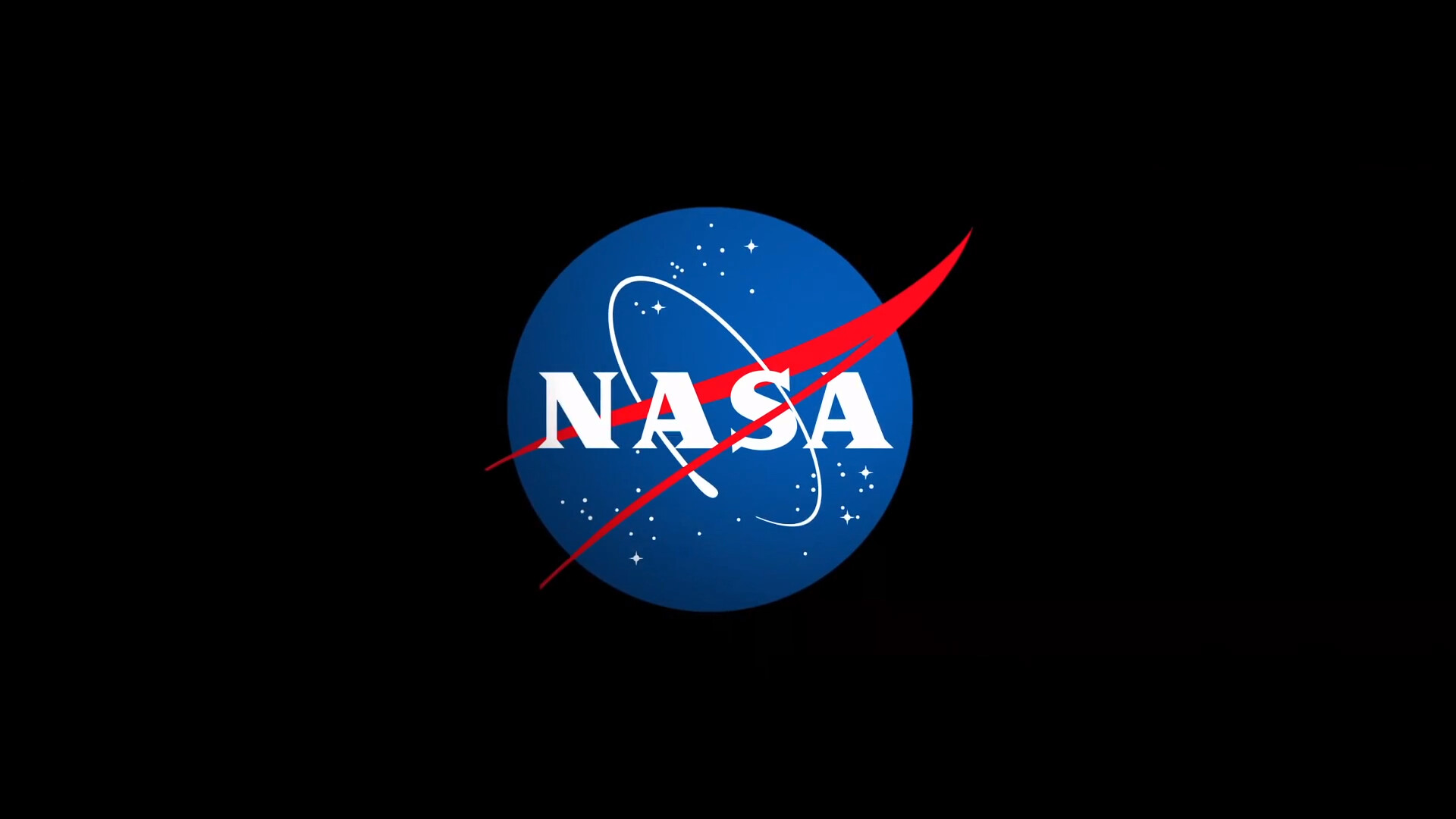 The ceremony will take place during the 38th meeting of Marshall’s Small Business Alliance, from 8 a.m. to 12:30 p.m. CDT at the U.S. Space & Rocket Center’s Davidson Center for Space Exploration in Huntsville. The event will also highlight new opportunities for small businesses to take part in NASA’s procurement processes. Afterward, attendees will have the open opportunity to network with NASA officials, prime contractors, and other members of Marshall’s small business community. Exhibitors will provide valuable information to support their business.
The ceremony will take place during the 38th meeting of Marshall’s Small Business Alliance, from 8 a.m. to 12:30 p.m. CDT at the U.S. Space & Rocket Center’s Davidson Center for Space Exploration in Huntsville. The event will also highlight new opportunities for small businesses to take part in NASA’s procurement processes. Afterward, attendees will have the open opportunity to network with NASA officials, prime contractors, and other members of Marshall’s small business community. Exhibitors will provide valuable information to support their business.
NASA speakers include:
Dwight Deneal, assistant administrator, Office of Small Business Programs, NASA Headquarters Joseph Pelfrey, center director, NASA Marshall John Cannaday, director, Office of Procurement, NASA Marshall Davey Jones, strategy lead, NASA Marshall David Brock, small business specialist, Office of Small Business Programs, NASA Marshall For 17 years, the Marshall Small Business Alliance has aided small businesses in pursuit of NASA procurement and subcontracting opportunities. Its primary focus is to inform, educate, and advocate on behalf of the small business community. At each half day meeting, businesses will gain valuable insight to guide them in their marketing endeavors.
Learn more about Marshall’s small business initiatives.
Printed Engines Propel Next Industrial Revolution In the fall of 2023, NASA hot fire tested an aluminum 3D printed rocket engine nozzle. Aluminum is not typically used for 3D printing because the process causes it to crack, and its low melting point makes it a challenging material for rocket engines. Yet the test was a success.
Printing aluminum engine parts could save significant time, money, and weight for future spacecraft. Elementum 3D Inc., a partner on the project, is now making those benefits available to the commercial space industry and beyond.
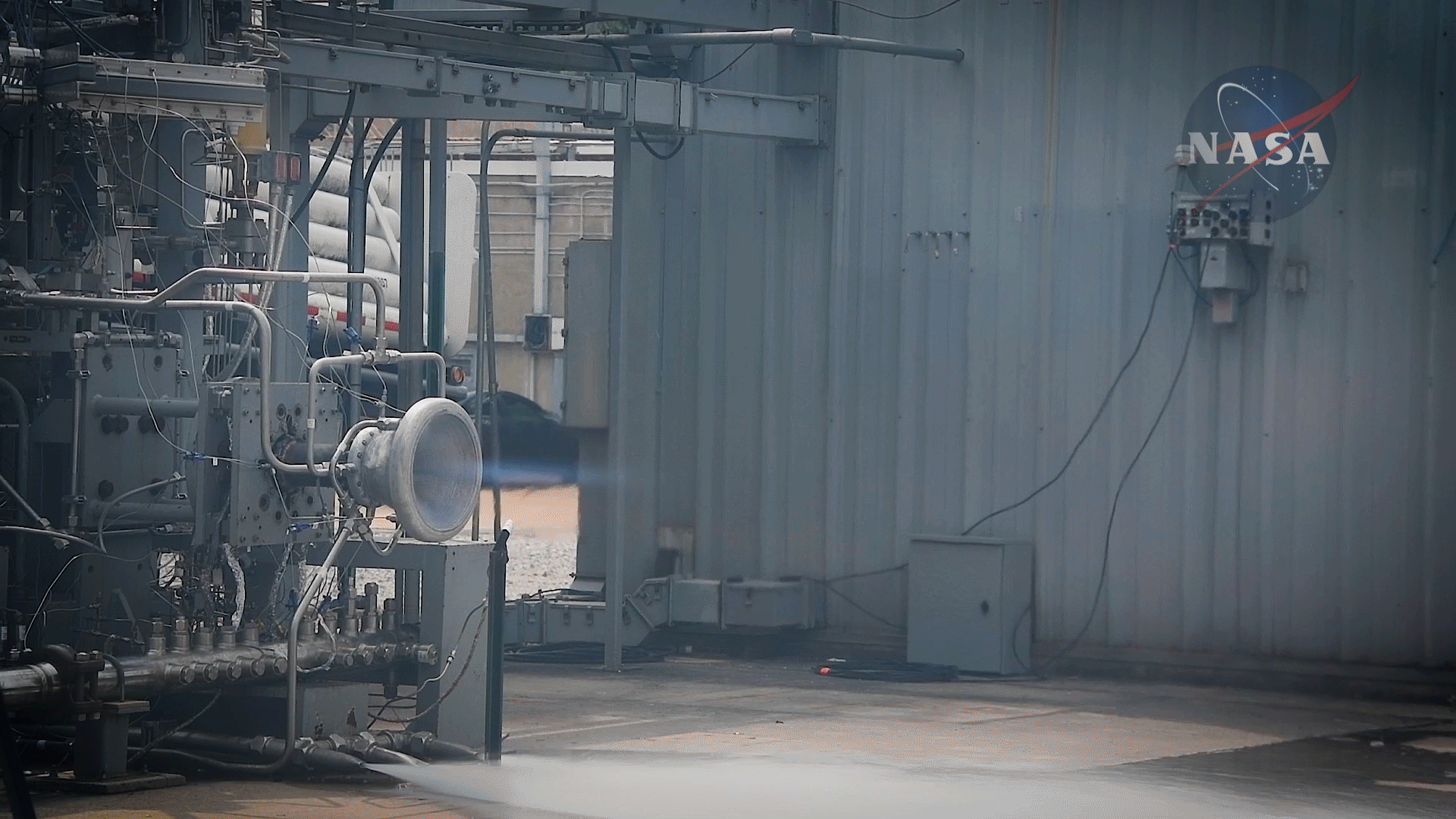
NASA adopted the technology, qualifying the RAM version of a common aluminum alloy for 3D printing. The agency then awarded funding to Elementum 3D and another company to print the experimental Broadsword rocket engine, demonstrating the concept’s viability.
Meanwhile, a team at NASA’s Marshall Space Flight Center was working to adapt an emerging technology to print larger engines. In 2021, Marshall awarded an Announcement of Collaborative Opportunity to Elementum 3D to modify an aluminum alloy for printing in what became the Reactive Additive Manufacturing for the Fourth Industrial Revolution project.
The project also made a commonly used aluminum alloy available for large-scale 3D printing. It is already used in large satellite components and could be implemented into microchip manufacturing equipment, Formula 1 race car parts, and more. The alloy modified for the Broadsword engine is already turning up in brake rotors and lighting fixtures. These various applications exemplify the possibilities that come from NASA’s collaboration and investment in industry.
Read more here.
Hubble Finds More Black Holes than Expected in Early Universe With the help of NASA’s Hubble Space Telescope, an international team of researchers led by scientists in the Department of Astronomy at Stockholm University has found more black holes in the early universe than has previously been reported. The new result can help scientists understand how supermassive black holes were created.
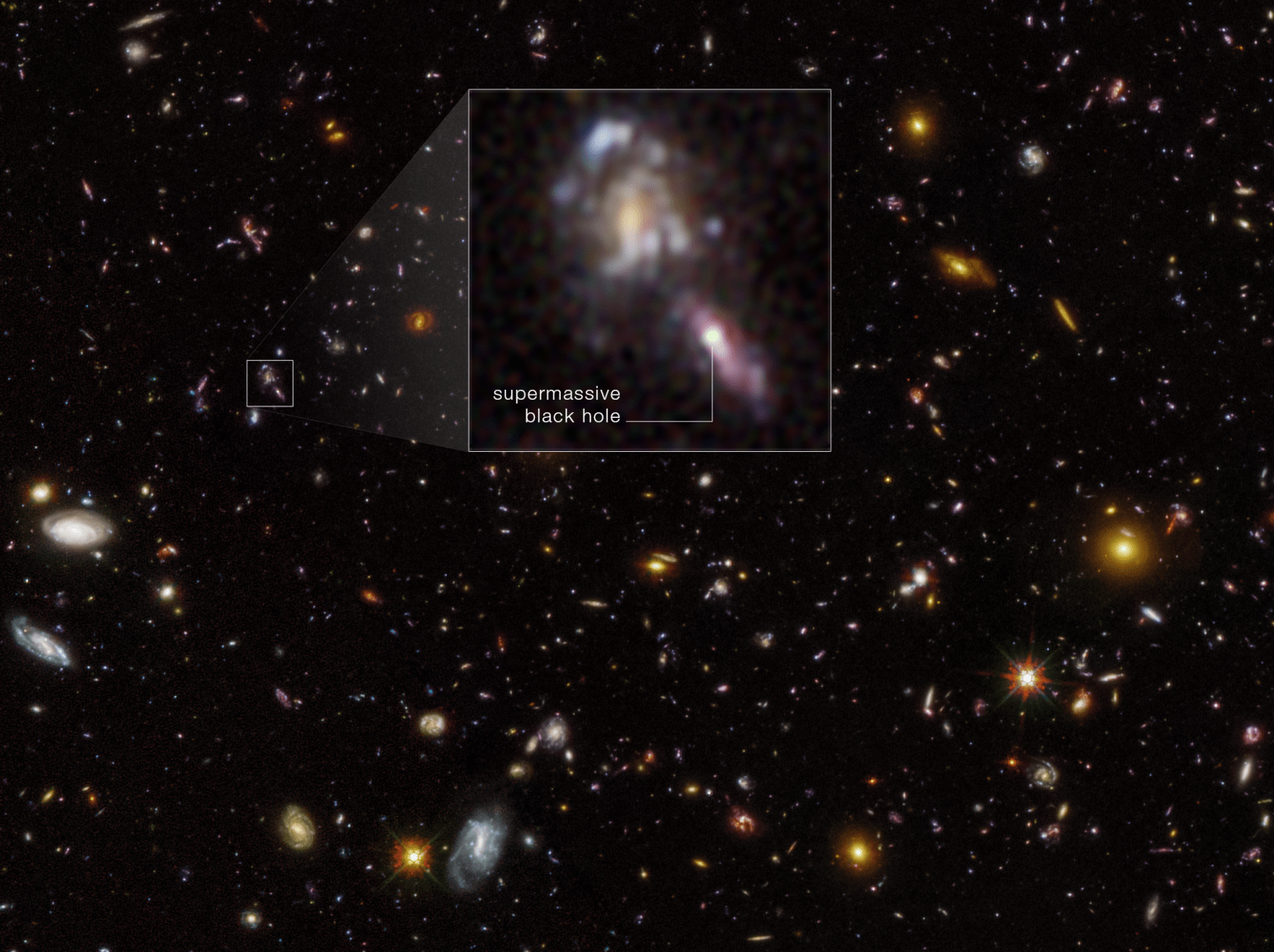 This is a new image of the Hubble Ultra Deep Field. The first deep imaging of the field was done with Hubble in 2004. The same survey field was observed again by Hubble several years later, and was then reimaged in 2023. By comparing Hubble Wide Field Camera 3 near-infrared exposures taken in 2009, 2012, and 2023, astronomers found evidence for flickering supermassive black holes in the hearts of early galaxies. The survey found more black holes than predicted. NASA, ESA, Matthew Hayes (Stockholm University); Acknowledgment: Steven V.W. Beckwith (UC Berkeley), Garth Illingworth (UC Santa Cruz), Richard Ellis (UCL); Image Processing: Joseph DePasquale (STScI) Currently, scientists do not have a complete picture of how the first black holes formed not long after the big bang. It is known that supermassive black holes, that can weigh more than a billion suns, exist at the center of several galaxies less than a billion years after the big bang.
This is a new image of the Hubble Ultra Deep Field. The first deep imaging of the field was done with Hubble in 2004. The same survey field was observed again by Hubble several years later, and was then reimaged in 2023. By comparing Hubble Wide Field Camera 3 near-infrared exposures taken in 2009, 2012, and 2023, astronomers found evidence for flickering supermassive black holes in the hearts of early galaxies. The survey found more black holes than predicted. NASA, ESA, Matthew Hayes (Stockholm University); Acknowledgment: Steven V.W. Beckwith (UC Berkeley), Garth Illingworth (UC Santa Cruz), Richard Ellis (UCL); Image Processing: Joseph DePasquale (STScI) Currently, scientists do not have a complete picture of how the first black holes formed not long after the big bang. It is known that supermassive black holes, that can weigh more than a billion suns, exist at the center of several galaxies less than a billion years after the big bang.
“Many of these objects seem to be more massive than we originally thought they could be at such early times – either they formed very massive or they grew extremely quickly,” said Alice Young, a PhD student from Stockholm University and co-author of the study published in The Astrophysical Journal Letters.
Black holes play an important role in the lifecycle of all galaxies, but there are major uncertainties in our understanding of how galaxies evolve. In order to gain a complete picture of the link between galaxy and black hole evolution, the researchers used Hubble to survey how many black holes exist among a population of faint galaxies when the universe was just a few percent of its current age.
Initial observations of the survey region were re-photographed by Hubble after several years. This allowed the team to measure variations in the brightness of galaxies. These variations are a telltale sign of black holes. The team identified more black holes than previously found by other methods.
The new observational results suggest that some black holes likely formed by the collapse of massive, pristine stars during the first billion years of cosmic time. These types of stars can only exist at very early times in the universe, because later-generation stars are polluted by the remnants of stars that have already lived and died. Other alternatives for black hole formation include collapsing gas clouds, mergers of stars in massive clusters, and “primordial” black holes that formed (by physically speculative mechanisms) in the first few seconds after the big bang. With this new information about black hole formation, more accurate models of galaxy formation can be constructed.
“The formation mechanism of early black holes is an important part of the puzzle of galaxy evolution,” said Matthew Hayes from the Department of Astronomy at Stockholm University and lead author of the study. “Together with models for how black holes grow, galaxy evolution calculations can now be placed on a more physically motivated footing, with an accurate scheme for how black holes came into existence from collapsing massive stars.”
Astronomers are also making observations with NASA’s James Webb Space Telescope to search for galactic black holes that formed soon after the big bang, to understand how massive they were and where they were located.
The Hubble Space Telescope has been operating for over three decades and continues to make ground-breaking discoveries that shape our fundamental understanding of the universe. Hubble is a project of international cooperation between NASA and ESA (European Space Agency). NASA’s Goddard Space Flight Center manages the telescope and mission operations. Lockheed Martin Space, based in Denver, Colorado, also supports mission operations at Goddard. The Space Telescope Science Institute in Baltimore, Maryland, which is operated by the Association of Universities for Research in Astronomy, conducts Hubble science operations for NASA.
NASA’s Marshall Space Flight Center was the lead field center for the design, development, and construction of the space telescope.

